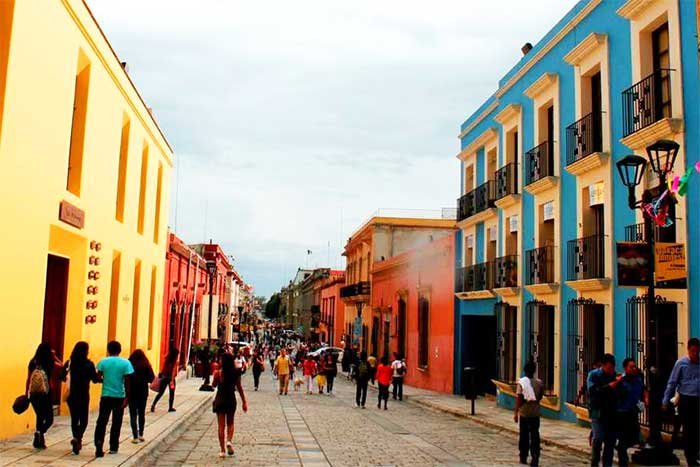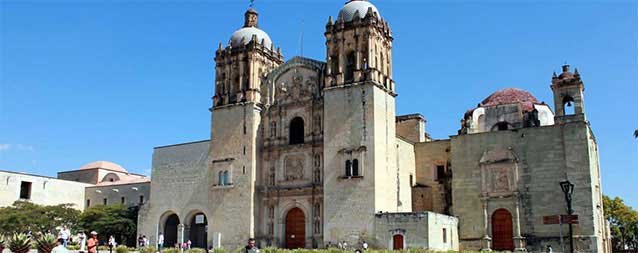Oaxaca: Tourism, Markets, and Places to Visit
Oaxaca de Juárez is one of the most picturesque and tourist-friendly cities in Mexico, and it is also the capital of the State of Oaxaca.

The city of Oaxaca, officially known as Oaxaca de Juárez, was founded in 1486 and declared a UNESCO World Heritage site in 1987. Today, it is a popular tourist destination for both Mexicans and foreigners.
Oaxaca Tourism Information
The city of Oaxaca is culturally significant, blending colonial traditions with those of pre-Hispanic indigenous groups. The streets, buildings, parks, churches, and markets are filled with history, culture, and customs that are integral to the identity of its people.
Oaxaca is located in the southwest, 460 km from Mexico City. The city is served by the Oaxaca International Airport, located 12 km away, where flights from various Mexican cities arrive.

Dining in Oaxaca
The city of Oaxaca is renowned for its cuisine. A popular saying goes: "If you go to Oaxaca and don't try mole, you’ve never been." One of the best places to experience Oaxacan cuisine is the Mercado 20 de Noviembre, where several food stalls offer excellent local dishes.
Some of the most famous typical dishes include: tejates, bean chilaquiles, Oaxacan tamales, Oaxacan sausage, Mixtec pozole, chapulines (grasshoppers), mole, tlayuda, piedrazos, atole de granillo, and arroz chepil.
Places to Visit in Oaxaca
Monte Albán
Monte Albán is a significant archaeological site and one of the most visited attractions near Oaxaca. It was once the capital of the Zapotecs and is believed to have been inhabited between 500 BC and 700 AD. At its peak, the population of Monte Albán was over 26,000 people. Today, visitors can explore the ruins of various structures, such as the Palace, the Southern Platform, the Seven Venado System, and the Great Plaza.
At the foot of Monte Albán is the picturesque town of Atzompa, where a market takes place every Tuesday. Visitors can also see pottery workshops in Atzompa. Monte Albán is located 10 km from Oaxaca city.
More Sites to Explore
Zaachila: Archaeological center that was the last Zapotec capital.
Cuilapan de Guerrero: Historical and religious buildings constructed by the Dominicans in the 16th century.
San Bartolo de Coyotepec: A town with a historical church and black clay pottery workshops.
Santo Tomás Jalieza: A town known for its beautiful textiles and an interesting church dedicated to Saint Thomas.
San Martín Tilcajete: A town famous for producing colorful "alebrijes" (fantastic animal sculptures).
San Antonio Castillo Velasco: A village known for its handmade textiles.
Ocotlán de Morelos: A town with historical buildings such as the Palacio de Gobierno, Casa de Morales, and the former Convento de Santo Domingo de Guzmán. It is recommended to visit on market day.
Santa María El Tule: Famous for its historic "Tule Tree".
Mitla: A Zapotec ceremonial center with a fascinating museum and historical significance.
Oaxaca Handicrafts
Oaxaca is renowned as the city of Mexican handicrafts. Hundreds of families produce handcrafted goods in traditional methods. These crafts can be found in markets and shops throughout the city. A signature craft from Oaxaca is the alebrijes, which are small sculptures made from wood or other materials, depicting fantastical or grotesque animals and painted in vibrant colors. Several towns, such as San Martín Tilcajete and San Antonio Arrazola, specialize in these handicrafts, and visitors can tour their workshops.
Oaxaca is also famous for its Oaxacan painting, with notable artists such as Rufino Tamayo, Rodolfo Morales, and Francisco Toledo contributing to the tradition.
Another highlight of Oaxaca's handicrafts is its weavings and textiles. All of these are handwoven from wool in various colors, adhering to pre-Hispanic traditions. Additionally, pottery and basket weaving have an important place in the local artisanal production.
Markets in Oaxaca
The city of Oaxaca and its surrounding areas feature essential markets that take place on specific days of the week. These markets offer a variety of products, from fruits and vegetables to footwear, tools, food, textiles, and handicrafts. Visiting Oaxaca's markets is a wonderful way to immerse yourself in the culture of the region, offering a unique glimpse into the customs and traditions of the locals.
When and Where do the Markets Operate?
Saturdays: Oaxaca City
Sundays: Tlacolula, Nochixtlán
Mondays: Ixtlán, Miahuatlán, Villa Alta
Tuesdays: Atzompa
Wednesdays: Etla, Zimatlán
Thursdays: Zaachila, Ejutla
Fridays: Ocotlán, Coyotepec, Jalietza
Museums in Oaxaca
MUSEO DE ARTE CONTEMPORÁNEO (MACO). Address: Alcalá No. 202, Historic Center. Phone: (951) 514 1055 / 514 2228 / 514 2818
INSTITUTO DE ARTES GRÁFICAS DE OAXACA (IAGO). Address: Alcalá No. 507, Historic Center. Phone: (951) 516 2045 / 516 6980
MUSEO DE SITIO CASA DE JUÁREZ. Address: García Vigil No. 609, Historic Center. Phone: (951) 516 1860
MUSEO DE ARTE PREHISPÁNICO DE MÉXICO “RUFINO TAMAYO”. Address: Morelos No. 503, Historic Center. Phone: (951) 516 4750 / 516 7617
MUSEO PEDAGÓGICO DE ARQUEOLOGÍA “8 VENADO” Y MUSEO DE CRI CRI. Address: Xicotencatl No. 706, Esq. La Noria Centro. Phone: (951) 514 3579
MUSEOS DE LOS PINTORES OAXAQUEÑOS. Address: Av. Independencia No. 607, Historic Center. Phone: (951) 516 5645
MUSEO DE LA BASÍLICA DE LA SOLEDAD. Address: Av. Independencia # 107. Phone: (951) 516 5076
MUSEO DEL PALACIO, ESPACIO DE LA DIVERSIDAD. Address: Interior of the former government palace. Phone: (951) 501 1662
MUSEO DE MONTE ALBÁN. Address: Inside the tourist center of the archaeological zone. Phone: (951) 516 1215 / 516 7077
MUSEO TEXTIL DE OAXACA. Address: Av. Hidalgo # 917 Esq. Fiallo. Phone: (951) 501 1104 / 501 1617 / 514 9256
MUSEO ARTE POPULAR DE OAXACA (BLACK CLAY). Address: Independencia S/N. San Bartolo Coyotepec, Oaxaca. Phone: (951) 551 0036
MACO (Museum of Contemporary Art of Oaxaca). Address: Located at Alcalá 202, Historic Center. Phone: (951) 514 1055, 514 2228, 514 2818
MUSEO REGIONAL DE OAXACA. Address: Ex Convento de Santo Domingo, located on Macedonio Alcalá Street.